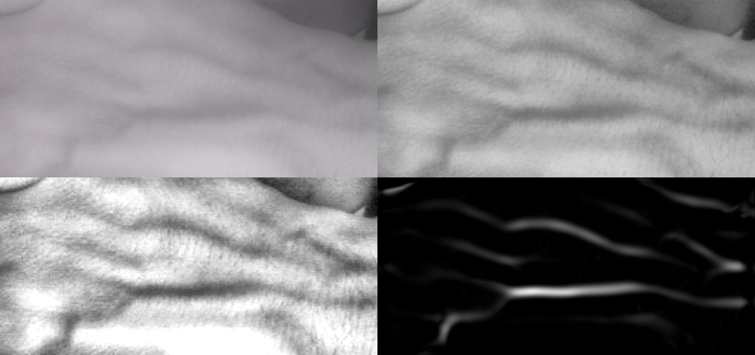For some strange reason, a detailed analysis of the problem helped 😉: Any conversion of the filter results to a picture shown should have transferred the image to 8Bit grayscale (uint8). To find out, why this happened, we printed out the arrays containing the filtered results:

As you can see, the array contains very, very small values (e^-6 to -23 e.g.) – and if values between 0 and 1 are transformed to the range from 0 to 255, these very very small numbers – just stay zero.
Just out of curiosity, we tried what would happen if you just multiply this array with a huge factor, e.g. 2500000 – and we got our filtered results 😊!

This image shows the original camera NIR image (upper left) and the first and second stage image enhancement by overall and region specific level adjustment (CLAHE filter). The last (lower right) picture shows the frangi filter result, and you can see that it’s just the major veins being left.
Another try with the arm instead of the back of the hand delivers the same astounding results:

The veins are clearly marked out and the frangi filter result could even be further processed by find contours etc, because it is just the veins left…
So, do make a long story short: Yes, the frangi filter is a major contribution to vein detection and could make future versions of our Veinfinder even more powerful.
Thanks to Dr. Halimeh from the Coagulation Centre in Duisburg, we were able to compare an earlier prototype with a professional medical vein detection system – and even at that stage, both delivered comparable results concerning the detection depth of veins.
The only drawback at the moment is processing speed, because the frangi filter really slows things down – so this is just the starting point for future analysis, coding and hacking 😉…
 Myrijam
Myrijam
Discussions
Become a Hackaday.io Member
Create an account to leave a comment. Already have an account? Log In.